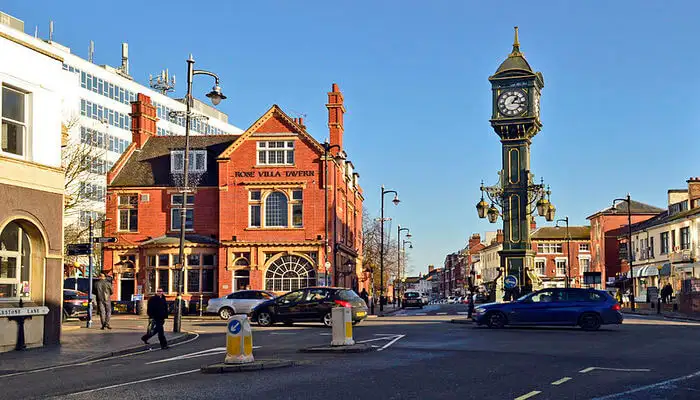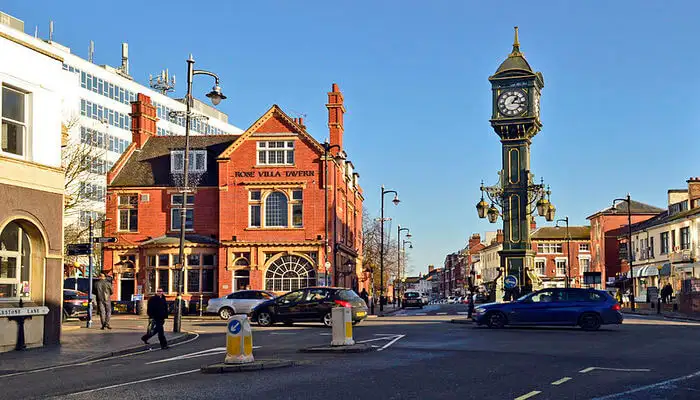
Birmingham, a city in England, allures travelers with its abundant cultural and historical heritage. This, coupled with the city’s contemporary recreational offerings, makes it a preferred destination among tourists from all over the world. With an annual influx of over forty million visitors, Birmingham undoubtedly ranks as one of England’s most worthy tourist hotspots. Given the multitude of fascinating sites that Birmingham boasts, it can be challenging to decide which places to visit. To simplify this task, here is a list of significant locations in Birmingham that should be included in your itinerary when you visit.
The Black Country Living Museum
The Black Country Living Museum, located just 9 miles from the city center of Birmingham, is a fascinating open-air museum that offers a unique glimpse into the region’s rich mining history. Spanning 26 acres, this museum comprises about fifty authentic buildings, including an old mine shaft that visitors can explore.
What makes the Black Country Living Museum particularly noteworthy is its commitment to historical accuracy. Visitors are transported back in time to the 19th century, where they can experience what life was like for the people who worked in the coal mines, iron foundries, and other industries that defined the region. To make the experience even more immersive, costumed guides are on hand to explain the history and culture of the time and to answer any questions visitors may have.
Exploring the Black Country Living Museum is a fun and educational experience for visitors of all ages. Whether you are interested in learning about the industrial revolution or simply want to experience what life was like in the past, this museum is an excellent destination. With its authentic buildings, costumed guides, and interactive exhibits, it is no wonder that the Black Country Living Museum is widely considered to be one of the best open-air museums in England.
Overall, the Black Country Living Museum is a must-visit attraction for anyone interested in exploring the history of industrialization in a fun and engaging way. From the old mine shaft to the authentic buildings and costumed guides, there is something for everyone to enjoy at this fascinating destination.
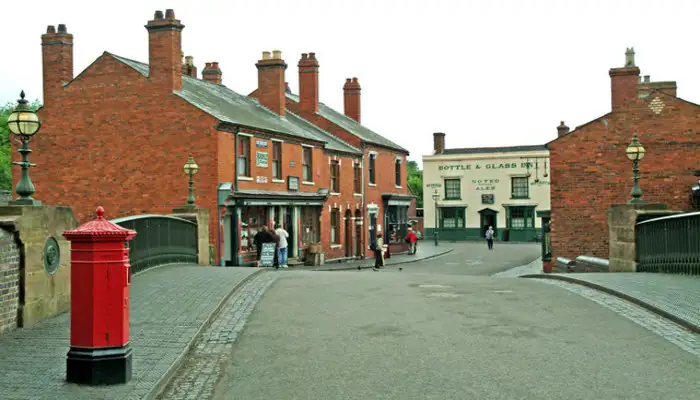
The Birmingham Botanical Gardens
The Birmingham Botanical Gardens, established in the nineteenth century, span an impressive 15 acres and are home to an incredible variety of plant species. These gardens are renowned for their stunning collection of bonsai trees and tropical birds, which add to the serene and peaceful atmosphere of the space. Visitors can explore more than 7,000 distinct plants and observe the beauty of The British National Bonsai Collection, which is housed within the gardens.
One of the most remarkable specimens in the Birmingham Botanical Gardens is the “Omiya tree,” a 250-year-old Juniperus Chinensis in the casual upright style that was gifted to the collection in 1995 by the city of Omiya, Japan. The tree is a stunning example of the art of bonsai and serves as a testament to the gardens’ commitment to preserving and showcasing this unique and intricate form of horticulture.
Aside from the bonsai collection, there are many other rare and exotic plants to discover throughout the gardens. Notably, visitors can admire two magnificent Himalayan Cedars near the fountain, which add to the gardens’ unique charm and character.
For those looking for a sensory experience, the Birmingham Botanical Gardens also feature a dedicated sensory garden. Here, visitors can explore specific plants that are known for their ability to enhance the senses, such as fragrant herbs, soothing textures, and visually stunning colors.
Overall, the Birmingham Botanical Gardens offer a peaceful and immersive experience for visitors looking to explore the beauty of nature. From the impressive collection of bonsai trees to the rare and exotic plant species, there is something for everyone to enjoy in these stunning gardens.
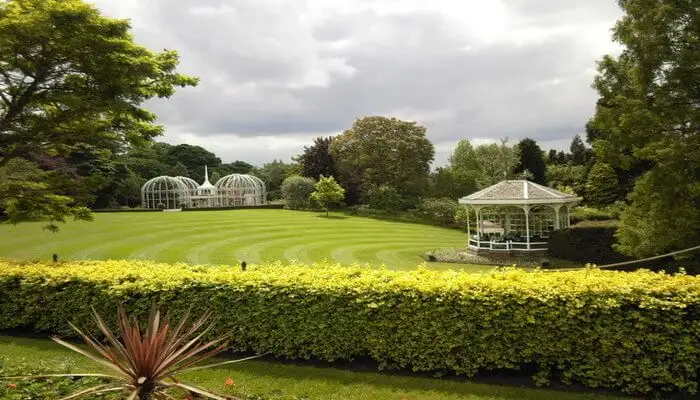
The Birmingham Museum and Art Gallery is a cultural institution that has been open since 1885 and is widely regarded as one of the finest museums in the country. The museum boasts an extensive collection of pre-Raphaelite works as well as paintings by renowned artists from the 17th to 19th centuries. Visitors can explore a variety of fascinating displays related to the city’s history, including archaeological finds dating back to the Stone Age.
The museum’s collection of relics is particularly impressive and includes ancient coins from different periods, from the Classical era to the Middle Ages. There are also a variety of antiques from regions such as Ancient India, Central Asia, Cyprus, and Egypt, giving visitors a unique and broad insight into different cultures from across the globe.
One of the highlights of the museum is the Pinto collection, which contains more than six thousand wooden toys. The collection is a must-see for families with young children or anyone with an interest in the history of toys and games.
For those seeking a more refined experience, the museum’s Edwardian Tearooms offer an excellent high-tea experience, complete with traditional treats and an elegant atmosphere. The tearooms provide a perfect setting for visitors to relax and enjoy the museum’s impressive surroundings.
The Ikon Gallery, on the other hand, is a contemporary art museum that caters to contemporary art enthusiasts. It hosts a wide range of exhibitions and showcases works by both established and up-and-coming artists, providing visitors with an opportunity to explore the latest trends and ideas in the art world.
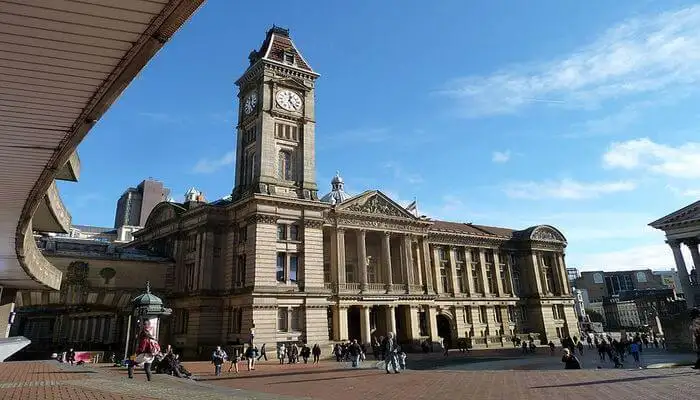
The Jewelry Quarter in Birmingham
The Jewelry Quarter in Birmingham is a hub of the British jewelry industry, with more than 200 jewelers’ workshops and silversmiths producing around forty percent of the country’s jewelry. Visitors to the area can explore the fascinating world of jewelry-making by visiting the top sightseeing spot in the region, the Museum of the Jewellery Quarter. The museum provides visitors with a unique opportunity to see behind the scenes of the trade and learn about the skills and techniques used to create some of the most beautiful and intricate jewelry in the world.
Other important places of interest in the area include the Hall of Memory, which was erected to commemorate the people who lost their lives in the Second World War. It is a solemn and moving tribute to those who sacrificed their lives for their country. St. Paul’s Square is another must-see attraction in the Jewelry Quarter. This historic square is home to some of the oldest buildings in the city, including St. Paul’s Church, which was built in 1779.
The famous Pen Museum is another important attraction in the Jewelry Quarter. The museum showcases the rich history of how pens were made using nineteenth-century techniques. The area was once home to many plunge pen makers who played an essential role in the pen trade of the city. During the early twentieth century, Swan Pens opened a large gold pen production line in the city, taking advantage of the skilled gold workers of the Jewelry Quarter.
In addition to these attractions, visitors can also explore the many jewelry shops and boutiques in the area, offering a wide range of beautiful and unique jewelry pieces. Overall, the Jewelry Quarter is a must-visit destination for anyone interested in the art of jewelry-making, history, and culture.
